Romeo & Juliet: the Covid Cut

Jessie Buckley and Josh O’Connor, the doomed lovers in the National Theatre’s disruptive new play-as-a-TV-film, explain why their Shakespeare adaptation is the right drama for right now.
Culture
Words: Craig McLean
Shakespeare, eh? Baffling language, convoluted plots, ultra-dense text, antiquated settings, characters who say nothing to you about your life, unreal scenarios (someone called Bottom who’s half-donkey? A ghost at dinner? A mad Danish prince talking to a skull?), double-English on a gloomy Wednesday afternoon, a punishing (and overpriced) night at the theatre, suffered under parental duress…
The makers of the National Theatre’s new production of Romeo & Juliet know all that. They understand our Shakespeare fear. That’s why their version is a pacy 90 minutes; set last year, not 400 years ago, in the UK, not 16th century Italy; a bit of techno; a club scene; high street fashion; way fewer soliloquising old men and way more diverse young faces; specially filmed and free on your telly over Easter.
When Jessie Buckley was at school she “didn’t enjoy Shakespeare and didn’t get it”. And the Irish actress – last seen in another brain-boggling drama, Charlie Kaufman’s I’m Thinking of Ending Things – said that to the director who’d just cast her as the playwright’s greatest tragic heroine.
Even Emily Burns, the writer tasked with editing the text to make it understandable for a modern audience, admits to coming unstuck with Shakespeare.
“These are text-based plays filled with both famous and less-famous bits of prose and verse. Some of which is easy to comprehend, but lots of which is very, very difficult to understand. I can’t read Shakespeare at the pace I read contemporary writing.
“The words mean different things now,” points out the Resident Director at the London theatrical institution. “You need a glossary. You need to think about it a lot.”
Even if you’ve worked, as Burns has, on productions of Julius Caesar, Antony and Cleopatra, A Midsummer Night’s Dream, Timon of Athens and Much Ado About Nothing, tackling Shakey – far less enjoying him – is a tall order.
Josh O’Connor, too, had, let’s say, complicated feelings about The Bard.
“Initially, to be honest, the last play I wanted to do was Romeo & Juliet!” admits with a laugh the actor who just won the Best Actor Golden Globe for portraying Prince Charles in The Crown. He’s tasked with playing Shakespeare’s noblest victim of love, one half of fair Verona’s star-cross’d lovers whose intense feelings for each other are so complicated by their feuding families that, oops, they manage to kill themselves.
Equally, being a good student of stage history, this graduate of Bristol Old Vic Theatre School understands that “often with Romeo & Juliet, there’s a slight laziness. We think: ‘They’re young, they’re 14 years old or whatever, and therefore it’s first love and they’re naïve.’ And that’s why they think: ‘This is love, this is amazing’ – and they die for each other. And we go: ‘Awww, little children.’”
Also lazy, observes Fisayo Akinade, cast as a gay Mercutio, are assumptions about the playwright’s characters.
“The play is set between these two warring families,” says the actor who starred in Russell T. Davies’ 2015 Channel 4 mini-series Cucumber and Banana. “Then you’ve got religion completely entwined with the bones of the play. And as we know there are lots of religious organisations who don’t approve of homosexuality. So the decision was partly to give Mercutio his fight, and anger, and frivolousness, and fun.
“We have to try and make these 400-year-old plays vital and relevant,” Akinade goes on. “But Shakespeare didn’t write the sexuality or race of his characters. So having a cast that is representative of what we see when we walk down any street in London is really key [because it] stops people feeling that theatre is only for a certain demographic. Because these people are [making] it, it means everybody can come and see it.”
Or, as the play’s director Simon Godwin puts it: “It was important to have more love than just the heterosexual love of Romeo and Juliet. If Shakespeare is to speak to us now, he needs to also reflect the diversity and multiplicity of our communities.”
Presenting, then, a Romeo & Juliet that is grown-up, street-real, whip-smart and right for right now. It also happens to be a thrilling example of a deft and inspired response to the Covid-era realities – that is, brutalities – that have been inflicted on theatre in the last year.
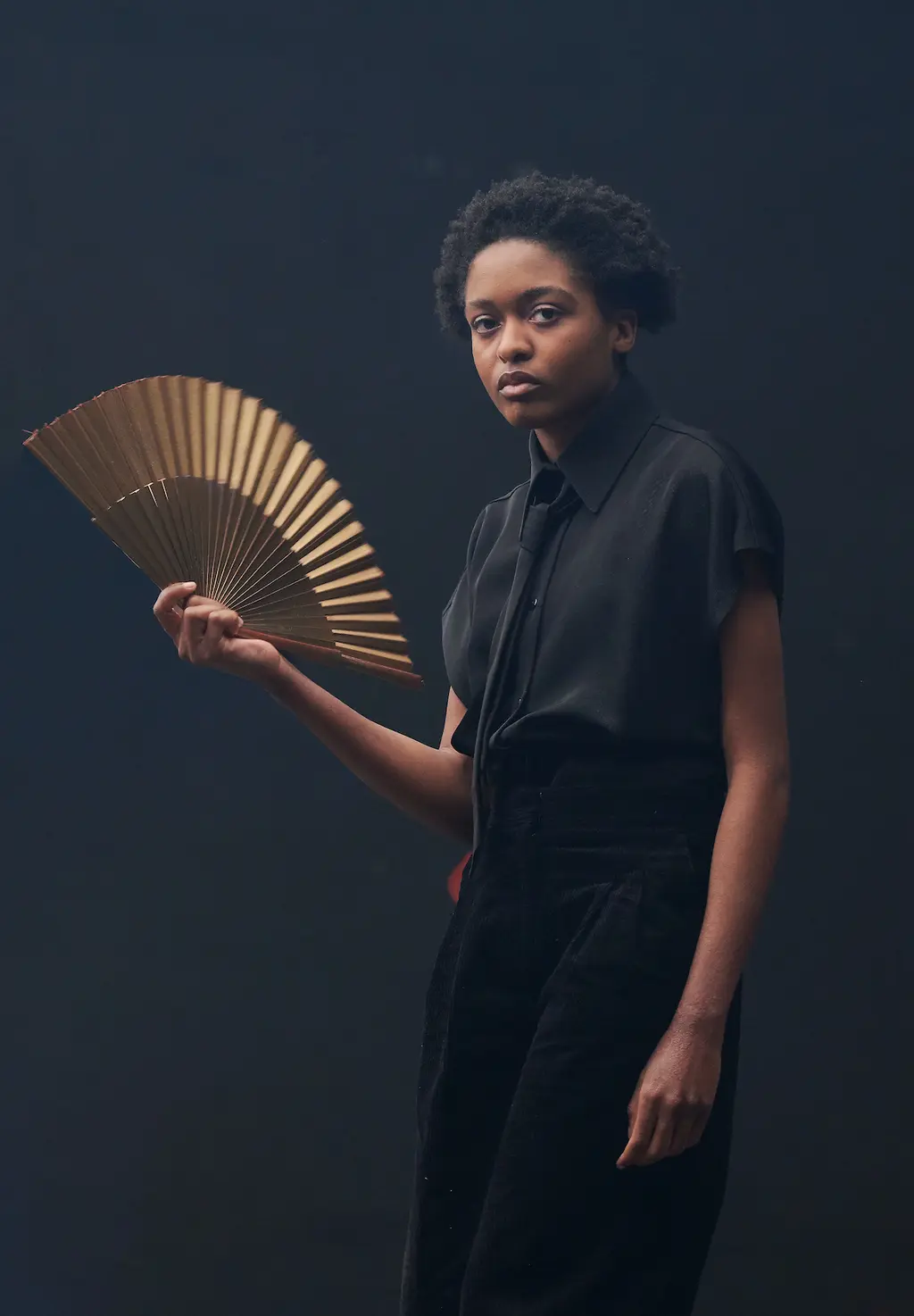
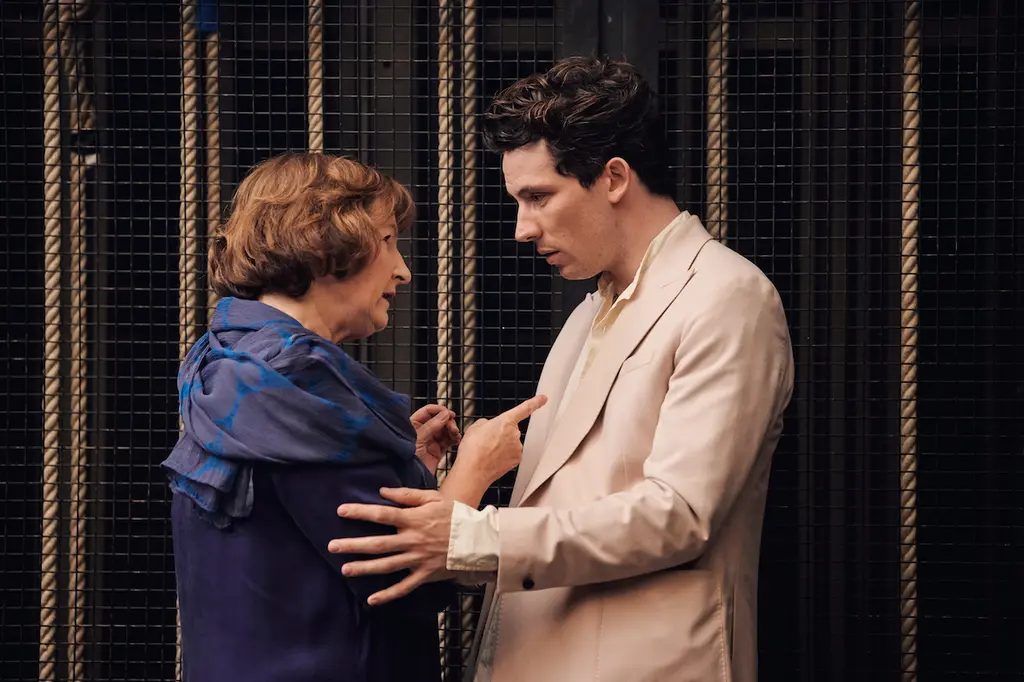
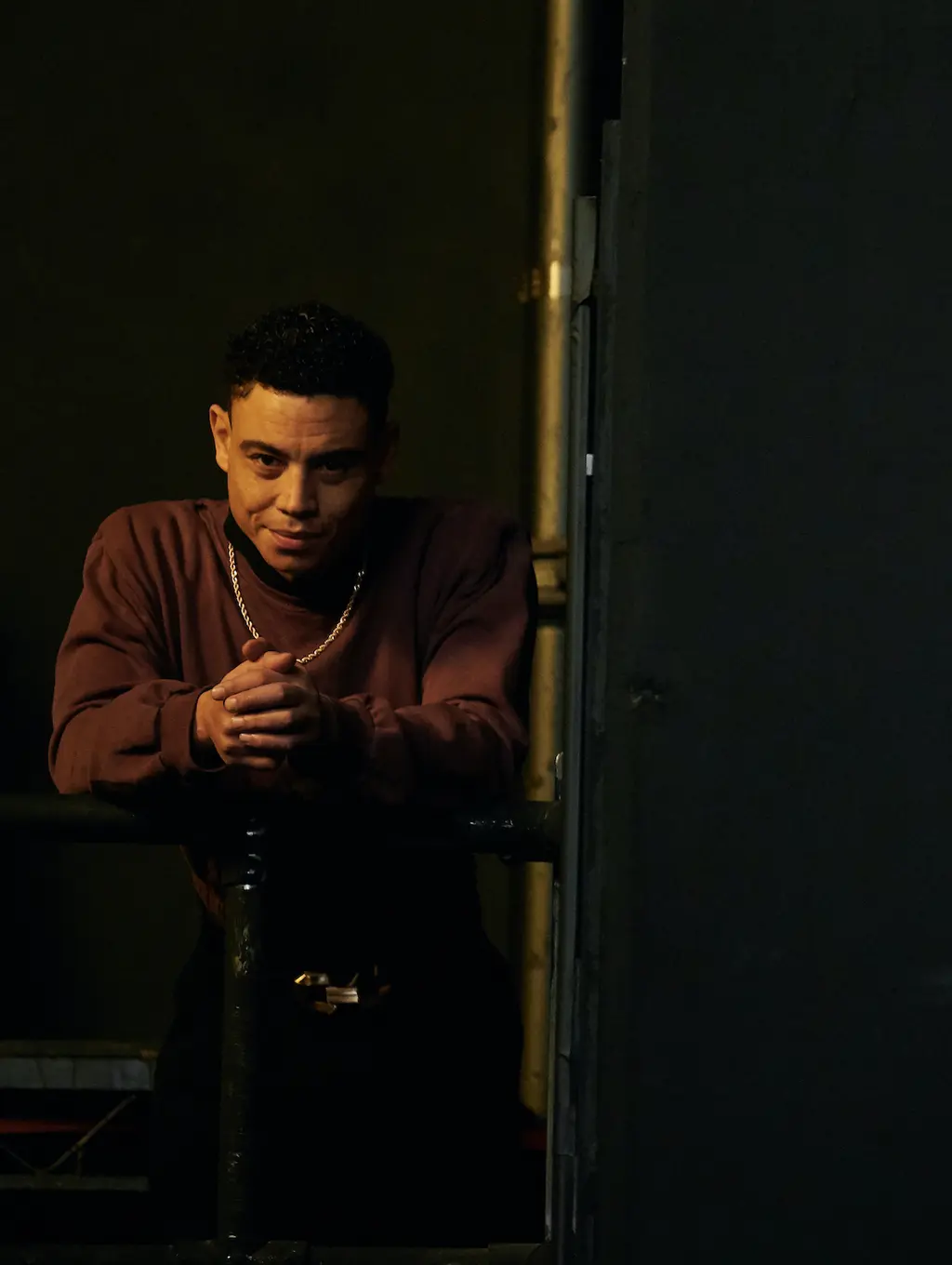
When it was first conceived in 2019, this National Theatre production was always intended to be modernised take on the play, albeit not quite as bleeding-edge as it is now.
“It’s very difficult to get mobile phones into Shakespeare,” begins Burns, “so you’re always trying to hit that late Eighties, early Nineties mood where there’s not a mobile phone you can pick up to avert disaster – but at the same time, everyone is feeling like it still has a contemporary sensibility.”
She was only 18 drafts into her fresh, late 20th century take when she and Godwin realised that the threat of a global pandemic might impact on their plans. As the director said to her as they auditioned actors early last March: “Yeah, if this Covid thing becomes big, maybe we’ll have to find a way to get it into the production.”
A week later the UK went into lockdown and theatres shut, never to reopen, more or less, to date. Burns had to mostly shred that 18th draft and start again, apart from retaining “the swapping of Lord and Lady Capulet to make her the leading figure in the household,” she notes of a character now played by Tamsin Greig (Episodes, Friday Night Dinner). “That was something we’d identified as being important for the [initial] stage production.”
Luckily, she and Godwin decided not to incorporate the pandemic – a play set, say, in “fair Corona” smacks of am-dram cringe even writing it here. Nonetheless, as production and costume designer Soutra Gilmour says: “It would be a bit weird to make anything other than a play that was placed now. Deliberately to make a film set in the Eighties seemed a bit of a strange choice in the context of the story we were telling”, and at the time they were setting it.
“So we had to abandon all that conceptual stuff we’d worked on, and reconceive everything. On a practical level, for example, the costuming was done in the November lockdown. So there were no shops open, let alone any vintage shops! So all we could use was contemporary stuff from the high street.”
JOSH O’CONNOR
At the heart of that reconceiving: the actors performing Romeo & Juliet over three winter weeks in the grungy backstage spaces of the National’s shuttered Lyttelton Theatre, the action captured on cameras to create a hybrid TV film-of-a-play.
Buckley freely admits that that was rather daunting. For one thing, she and O’Connor had signed on for the original, multiple-month stage run of Romeo & Juliet in part precisely because they wanted a break from acting in front of cameras.
“At first, we both probably weren’t really – ” she begins. “Well, I didn’t really know if I wanted to do a film version, I was too scared! And we didn’t know what it would be. Everything we thought was going to be was completely different now. But through conversations, and we would have these weekly therapy meetings, basically, on Zoom, which we loved and miss, we started nuzzling [sic] out what we thought this might be.”
“The medium is the message, as they say,” says Godwin, WhatsApping in from Washington DC where the Englishman is Artistic Director of the Shakespeare Theatre Company. “We went from making a play set in modern Italy with secular and Catholic values competing. When it became a film, the concept became: making a play within Covid. How does that feel? What’s possible?”
Obviously what wasn’t possible was an audience. But there were also none of the usual props, costumes, protocols and accoutrements of a stage production. Nor, even, the backstage luvviness.
“Obviously a bunch of theatre actors in a room not being able to kiss or hug each other was a nightmare,” O’Connor tells us, larkily. “But really, you’re going to be sick of this by the end, but from Jessie and I all you’re going to hear is beautiful positivity about this experience. Because we had the time of our lives.”
“It was really emotional because for the first time this titan of storytelling was dark for the first time ever,” continues Buckley, who built out her brilliant career from coming second in 2008’s West End-focused reality TV show I’d Do Anything via a nine-month run in Sondheim musical A Little Night Music, the Royal Shakespeare Company, TV dramas War and Peace and Chernobyl, and star-making turns in indie films Beast and Wild Rose.

“It felt like a lost space. But against the odds we used our imagination to find a way to crack the cement house down,” she adds, Shakespearianly, “and make something live again. That came with its own struggles, but I think we fell in love again with all the things we love about going to a building like that. Those spaces need people in them.”
Key to making the play more appealing to more Shakespeare-agnostic audiences, and to help it work onscreen, was cutting it in half. But that, apparently, is true to its original dynamic.
“It’s a fast story,” says Burns. “The whole play takes place in just three days. But if you sit down for three hours, no matter how fast the story, that’s a going to feel like it’s taking a long time to get through it. Cutting it back to 90 minutes I hope energises and activates the incredible compression of time that Shakespeare has put into this storyline.”
The team also trimmed back the waffley adult parts and foregrounded the teen and twentysomething characters. Equally, they were mindful of the viewing habits of a younger audience who will, by virtue of Romeo & Juliet screening on Sky Arts, be able to watch this play for considerably less cost and hassle (ie none) than spending a night on London’s South Bank.
Shakespeare imagined the play as “a swift, passionate account of young love,” says Godwin. “And people will be watching this on their phones, on the move, so I felt we had to be fleet of foot and responsive to that use of technology and new media. We embraced those parameters.”
The same, says Gilmour, goes for mood behind this retelling of the classic tale. “The whole thing is focused on the idea of young people taking hold of their own futures and being what they want to be, as well as being a portal into the world of theatre and how it works.”
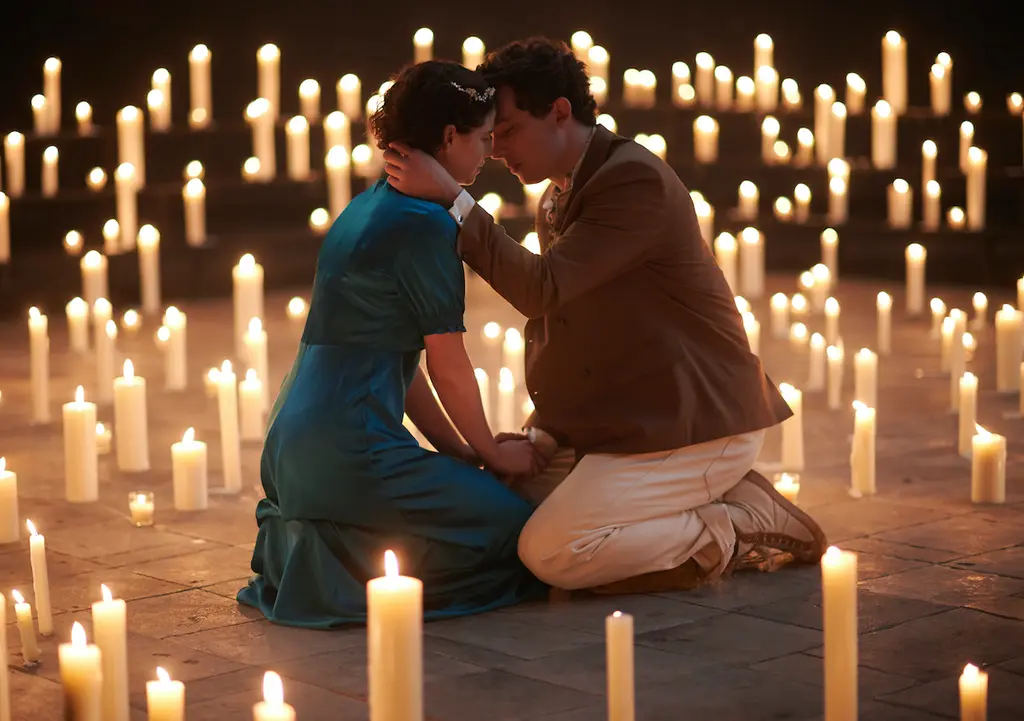
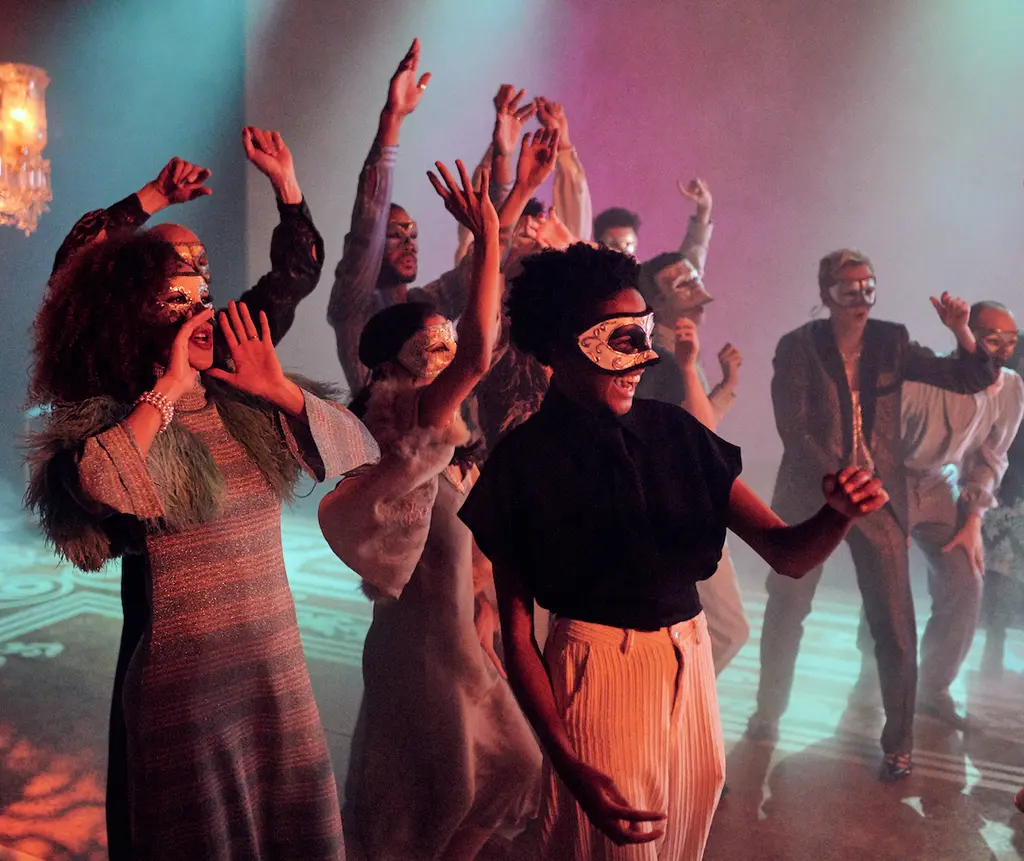

We see that deconstruction of theatre from the off, with Burns and Godwin beginning the action offstage: the actors drift into the building, all normal clobber, backpacks and water bottles. For anyone who opts to stream this play because they liked Josh in The Crown or Jessie in Chernobyl, it’s the perfect way in.
“We move from the rehearsal version to the story version,” says Burns. “If you come to this as a fan for Josh or Jessie, the first thing you engage with is them both in an off-duty setting. That teases the appetite for celebrity, then slowly leads us into being interested in their character as well.”
“This almost-ritual of actors arriving in a theatre to retell a story became our way into it,” expands Godwin. Also, he points out, Romeo & Juliet “is a study of fate. What’s striking is so many of the characters are prophesising their own deaths or outcomes… And when you’re making a play in the shadow of a pandemic, the proximity to death is very real.
“I think Shakespeare probably wrote the play in the presence of a plague that was shutting down theatres and constantly taking away life. So love was very precious for him, in the same way that love and touch became very charged for us.”
Paradoxically, then, the enforced nature of the circumstances and limitations of a Covid Year gave the play a renewed, timelier cultural currency. Or, in Godwin’s words: “The ancient stoic philosophy of ‘the obstacle is the way’ was very exciting for us, and a mantra. The circumstances of last year absolutely gave the production a meaning and a sense of charge that it probably wouldn’t have otherwise.”
Nowhere is that more powerful than in the scene where Romeo and Juliet first meet, a moment here reimagined in a club setting with the thumping dance music as loud as the thumping of the company’s feet on the stage.
“We had limitations – we weren’t on location, we weren’t making Baz Luhrmann,” says Buckley of the Australian director’s lavish 1996 teen-dream movie version which starred Leonardo DiCaprio and Claire Danes (and a very Nineties soundtrack). “We were in a studio in the back of a theatre, and we had a dancefloor, and a camera, and dancers…
“Simon and Michael Bruce, who did the music, opened up the conversation: what is the energy of this moment? What is being said that isn’t necessarily being said in words but in music or in [movement]?” From that, movement directors Jonathan Goddard and Shelley Maxwell choreographed a dance scene that is “something not poised but quite primal”.
In a way, this version is the black-and-white inverse of Luhrmann’s fantasia. But for Akinade, that film – the last triumphant re-invigorating of Romeo & Juliet – looms large.

“That is the reason I wanted to play Mercutio,” he says, beaming into his Zoom. “Watching Harrold Perrineau in that [happened as I was] figuring stuff out. Here’s this incredibly flamboyant character, dressed like a woman, this effervescent but dangerous creature… I remember being sat in high school, going: ‘I don’t know what this is feeling, but I want it!’”
It’s that timeless resonance that Emily Burns thinks gives Romeo & Juliet it’s forever-power. Yes, this is a tale of doomed romance. But it’s also a parable for how we live, and can’t live, after a year of lockdown.
“It spoke to a generation ago 25 years ago with Baz’s version. It spoke to a generation 400 years ago when Shakespeare wrote his play. It spoke to a generation 200 years before that with the [Arthur] Brooke poem it’s based on.
“There’s the kernel of something,” the writer continues, “of the experience to be young and restrained and feeling like your life is being curtailed by the society you live in – then finding an avenue for expression and to be truly free.
“And now, more than ever, everyone is desperately clinging to, or trying to find, that escape route. And Romeo & Juliet is the play that dramatises that very phenomenon.”
All that said: Shakespeare, eh? It’s a bit hard work. Not this time, insists Fisayo Akinade.
“You’ve got a cast of really brilliant, really young, really fresh talent doing a play that is hundreds of years old, and making it feel relevant, and [doing] that with style and class.”
And, as a film on your screen in Lockdown 3.0, this Romeo & Juliet punches (literally) home. “What it does really well is illustrate that love will find a way,” this thoroughly modern Mercutio concludes. “We’ve had a year of being separate from the people and friends and family we love.
“But love finds a way regardless. And that’s more pertinent than it ever has been. Literally everybody across the globe can relate to that.”
But, soft! What film through yonder screen breaks? Romeo & Juliet is on Sky Arts (free-to-air in the UK on Freeview channel 11) on Easter Sunday 4th April at 9pm, Easter Monday 5th April at 9.30pm and Thursday 8th April at 10pm. In America it broadcasts on PBS on Friday 23rd April at 9pm.







